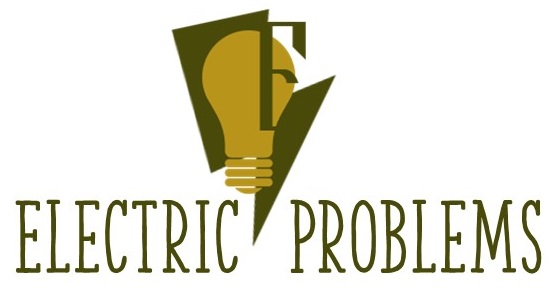![]()
Hooking up Generator to a House w/o Transfer Switch
DISCLAIMER: AS AN AMAZON ASSOCIATE I EARN FROM QUALIFYING PURCHASES. THIS POST CONTAINS AFFILIATE LINKS THAT WILL REWARD ME MONETARILY OR OTHERWISE WHEN YOU USE THEM TO MAKE QUALIFYING PURCHASES. FOR MORE INFORMATION, PLEASE READ MY EARNINGS DISCLAIMER.
Do we really need a generator transfer switch? The answer is YES!
Connecting a generator to a house without a transfer switch is possible, but not advisable and in most cases illegal. Without a transfer switch, you may create a dangerous situation that could end up costing lives. There is also an interlocking device that can keep your utility and generator breakers open one at a time.
Although a transfer switch is technically not needed, there are many reasons why getting one for your home is strongly recommended (when connecting a generator to power appliances during a blackout). A transfer switch will allow you to power your home quickly and safely during a power outage.
If you’re looking to sell your home anytime soon, you don’t want to be violating the National Electric Code rules! Without a transfer switch (in case of a fire), the insurance company could also refuse to compensate you.
Even though I will be discussing how to connect a generator without using a transfer switch, I would like to MAKE SURE that you actually want to install it without one! Here are more reasons why it’s a good idea to use a transfer switch in your setup:
Reason #1. Compliance
Legal issues may arise if you do it improperly. The National Electric Code stipulates that you need to have a well-installed conversion switch while using a heavy-duty portable generator to control electrical equipment in your house (according to this source).
This issue is particularly important if you want to sell your home in the near future. If not generator setup is not configured properly, it will result in code violations.
Reason #2. Safety
It is the safest method of connecting your generator to your home. Any other method of connection may result in a back feed into the main power supply source and unexpected workers could easily get burned or electrocuted.
Severe injuries or even death may result from any human error in wiring or handling circuits. Fires could also be triggered, which may result in severe damage to your home and appliances.
Reason #3. Simplicity
Using a transfer switch is the simplest way to keep your home powered through a power outage. Since most of our electrical equipment, such as water heaters, air conditioners, and furnaces, are hard-wired, an extension cord cannot be used to attach them to the generator.
Furthermore, in the case of a blackout, fumbling with extension cords to attach your generator should be the last thing on your mind.
Purpose of a transfer switch
The transfer switch disconnects the home’s power source from the grid while connecting your generator as a new source of electricity. Those switches often permit load-shift capacity, making it possible to switch between circuits depending on your needs.
Most importantly, the transfer switch ensures that you are providing your home with power from only ONE source at a time! Moreover, it prevents utility supply and generator supply from getting mixed, and your house load will run smoothly without causing trouble.
Mainly for safety reasons, a transfer switch must be used, but if for some reason you don’t want to install a transfer switch (or simply do not have one), there are certain ways to get around this problem.
How to connect a generator without a transfer switch
The problem with such installation is that you must somehow confirm that the breaker was actually turned OFF! If you are not one hundred percent positive the breaker was turned off, you should NOT presume that the generator power will be is isolated.
A lot of stuff can go wrong even during the actual installation process itself, resulting in significant (and sometimes very unfortunate) consequences. Although it is possible to power your home appliances without a transfer switch, it is not recommended due to the increased risks.
Here are two safest known ways of connecting a generator to a house without a transfer switch:
- Solution #1. Run the extension cords (a little messy, but will do the job).
- Solution #2. Install means of isolation (you can use an interlocking kit).
** Please note! Isolating generator power from the utility power source by breakers ONLY is against the law and is very dangerous! In this situation, your homeowner’s insurance could be voided (not to mention you are risking your family’s health and safety). Just do not do that!
Now, let’s go over the connection techniques:
Solution #1
You can put electrical receptacles in your home that are connected to the generator only. Depending on the situation, this may be the safest approach for you, but it does require your circuits to be totally isolated from the main power supply.
The downside to this is that you will need to mark your generator outlets (by a different color, maybe) and move your appliances to the generator circuit during the outage. This could be problematic if some appliances are hard-wired.
While this method may be a hassle, it is simple and in most cases a less expensive alternative to the transfer switch installation. You can use old pipes to put your extension cords through and run them to critical appliances, lights, and some outlets.
In a worst-case scenario, you may end up opening doors and windows (and let’s hope that it’s warm and you have a gorgeous view!). A wire of 10-12 gauge is highly recommended for this purpose.
Only make sure not to place your generator inside the garage to avoid toxic fumes entering the living area.
Solution #2
In order to install your generator without a transfer switch, you will need a foolproof method to make sure that two suppliers of electricity in one common panel do not get interlinked! In some cases, a secure mechanical device could be used to prevent two sources from being turned ON at exactly the same time.
If you do not have such a device, do NOT install anything! You are risking breaking the codes, therefore, what you are doing will become illegal and extremely dangerous!
The manual interlock system may be used to safely choose one or the other source of power. It’s a device that will (physically) isolate the breakers to prevent both main power and a generator from being ON at the same time.
It is called an interlocking kit (or Generator Interlock kit) and this is what it looks like:

It’s a device that will manually prevent your generator and main power source to be operational at the same time. And yes, you can get it from Amazon! Here is a popular model from Square D (paid link).
This little device will prevent both of them from being ON at the same time. It is a fool-proof (aka idiot-proof) method to make sure that they will not be turned on by accident or forgetfulness.
With a generator interlock device on the main breaker and generator feeder, only one breaker can be turned on or off.
What You’ll Need for installation
- A Breaker. Choose a breaker that slightly less than the generator’s rated capacity.
- Wires. At least three sets of electrical wires are needed.
- An interlocking kit. You need this manual interlock to be installed between the main breaker and the generator feed breaker. The reason why this is very important is that you will not be able to back-feed the line with the generator in this setup.
The installation itself should be handle by a licensed electrician only. Make sure he installs a hardware interlock and check it yourself!
With the interlocking kit you should not be able to switch on the generator circuit breaker while the grid power is on, and vice versa. Also, check that the connector or connecting port lid is closed to prevent water from getting to the terminals.
Installation of your generator must comply with legal requirements before it can be used. You do not want to be causing injuries to technicians on power lines (who are trying to solve your power outage problem) or burning your house down, do you?
Maybe just get a transfer switch?
Automatic transfer switches are costly, but generator electrical panels with a built-in manual transfer switch can be found for a reasonable price. Here is one from Square D (paid link) sold on Amazon.
The only way to ensure that electricity does not return to the grid is to use an auto transfer switch. For you, your generator, your house, and the linesman, installing a transfer switch is the right and smart thing to do.
It is strongly recommended that you use an automatic transfer switch for connecting your generator due to the high probability of human error otherwise. The risk of connecting a generator to a home without using a transfer switch is simply not worth it.
Here is my favorite transfer switch that you can get without leaving your house from Amazon – a 50-amp transfer switch from Elkhart (paid link). It is recommended that an automatic transfer switch should be installed only by a certified electrician as well.
The stable and dependable operation of a generator requires a lot of electrical and mechanical expertise, and the implications of even a small mistake can be very serious.
If you can’t afford to get a generator installed the right way, you’ll have to come up with other ways to get by when you’re without electricity.
Installing a transfer switch will save you money in the long run. Safety first! It’s your life and health, do not gamble!

Click on the white button above to find your electrician!



